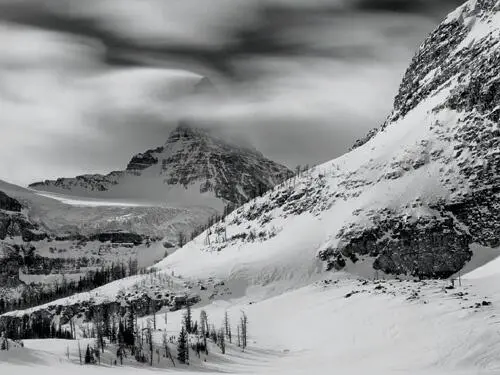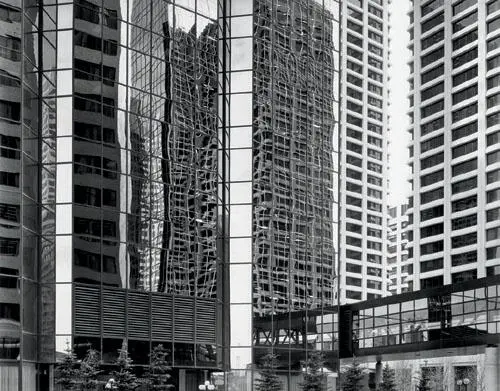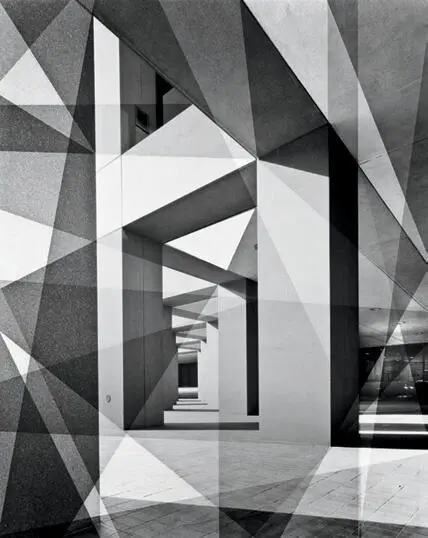Bruce Barnbaum - The Art of Photography - An Approach to Personal Expression
Здесь есть возможность читать онлайн «Bruce Barnbaum - The Art of Photography - An Approach to Personal Expression» весь текст электронной книги совершенно бесплатно (целиком полную версию без сокращений). В некоторых случаях можно слушать аудио, скачать через торрент в формате fb2 и присутствует краткое содержание. Жанр: Старинная литература, на английском языке. Описание произведения, (предисловие) а так же отзывы посетителей доступны на портале библиотеки ЛибКат.
- Название:The Art of Photography: An Approach to Personal Expression
- Автор:
- Жанр:
- Год:неизвестен
- ISBN:нет данных
- Рейтинг книги:5 / 5. Голосов: 1
-
Избранное:Добавить в избранное
- Отзывы:
-
Ваша оценка:
- 100
- 1
- 2
- 3
- 4
- 5
The Art of Photography: An Approach to Personal Expression: краткое содержание, описание и аннотация
Предлагаем к чтению аннотацию, описание, краткое содержание или предисловие (зависит от того, что написал сам автор книги «The Art of Photography: An Approach to Personal Expression»). Если вы не нашли необходимую информацию о книге — напишите в комментариях, мы постараемся отыскать её.
The Art of Photography: An Approach to Personal Expression — читать онлайн бесплатно полную книгу (весь текст) целиком
Ниже представлен текст книги, разбитый по страницам. Система сохранения места последней прочитанной страницы, позволяет с удобством читать онлайн бесплатно книгу «The Art of Photography: An Approach to Personal Expression», без необходимости каждый раз заново искать на чём Вы остановились. Поставьте закладку, и сможете в любой момент перейти на страницу, на которой закончили чтение.
Интервал:
Закладка:
To illustrate this point further, consider the following. It’s immaterial today to ask who started each of the movements in painting in the late 1800s and early 1900s: impressionism, pointillism, cubism, surrealism, etc. Who were the significant artists within each movement? That is the only important question. Some critics have gone so far as to say that it isn’t important who was the first to work in any new style, but who was the last!
By definition, the second person to paint in any of the above-mentioned styles was not original, in the pure sense of the term, but he may have been a greater contributor than the first person. For all we know, he may have been chastised for “copying” at the time (though, as we know, he was probably chastised more for going along with a little-understood and disliked new approach to painting). In either case, that criticism has no importance today. What counts is whether or not the painter’s works were honest, expressive, and artistically worthwhile.
Let me move to another example of my own work in the context of creativity. I made a photograph of Mt. Assiniboine during a winter trip to the Canadian Rockies in March 1986. Variable weather prevailed while I was there, and on the final day, clouds flew past the needle-like peak at remarkable speeds. Rather than employ the usual approach of a fast shutter speed to stop the cloud movement, I went the other way. I used a deep yellow filter to help separate clouds and sky, along with a 3.0 (10-stop) neutral density filter to force a 30-second exposure.

“The Matterhorn of the Canadian Rockies” was an awesome sight as clouds swept past the summit. Yet I felt that photographing it would yield just another pretty mountain shot, so I tried something different. Placing two filters on the lens—a #12 one-stop deep yellow filter and a 10-stop neutral density filter—I changed an exposure that would have been  second without filters to one requiring a 15-second exposure. Adding reciprocity failure to that, I exposed the scene for 30 seconds. The fast-moving clouds took on a surrealistic air, though nothing else within the scene was altered .
second without filters to one requiring a 15-second exposure. Adding reciprocity failure to that, I exposed the scene for 30 seconds. The fast-moving clouds took on a surrealistic air, though nothing else within the scene was altered .
Figure 16-3. Mt. Assiniboine
My first attempt failed. Clouds obscured the summit during much of the long exposure. I waited and watched the pattern of cloud movement across the face of the mountain and the pattern of sunlight and shadow on the slope below. Then I tried again. As I monitored the scene carefully throughout the exposure, I realized that everything was working perfectly! Clouds moved across the face of the peak, but the summit was visible at all times. Sunlight remained on the glacier immediately below the summit, as well as on the trees of the lower slopes (Figure 16-3).
To me, the strange quality of the clouds makes this a somewhat different landscape photograph, a creative photograph. If it is, then where did the idea of using the long exposure come from? I’m not absolutely sure, but I can speculate. I believe that Wynne Bullock’s long exposures of the surf may have been the trigger. I discussed those exceptional photographs in the section about shutter speed in Chapter 3. If I can remember my thinking back in 1976, I must have reasoned that if the moving surf could create unusual effects against fixed backgrounds, then perhaps moving clouds could create interesting effects against fixed foregrounds. The first several times I tried the long exposures, little of value happened. But the idea stuck with me. I have tried it periodically since then, several times with pleasing enough results to maintain my interest in its potential. At Mt. Assiniboine, it worked perfectly. I did it again at Mt. Rundle, also in the Canadian Rockies, years later (Figure 3-16). No doubt I’ll try it again, or try variations on it. After all, there is often more than one successful answer to a question.

In 1985, in Calgary Canada, I began my concentrated study of groups of modern downtown buildings. I found the geometric interactions of skyscraper groups extremely fascinating from a pure design standpoint .
Figure 16-4. Reflections, Calgary
I can’t say whether other photographers tried this before me. I suspect so, though I can’t recall another photograph that employs this approach. If it’s a first, then it’s truly original, truly new. If it’s been done previously, and done with success, then I am the second (or third, or fourth) to do it. But I’m not a copier because I’ve never seen it. At worst, I reinvented the wheel. What I did was put Bullock’s idea into a new context.
Other examples of creativity stem from architectural abstracts and design studies that I began in the mid-1970s. These studies accelerated greatly in the mid-1980s as I focused my attention on the geometric interactions of commercial downtown buildings (Figure 16-4). I confined my imagery to straight photography, avoiding multiple exposures or other types of artificial manipulation. I wanted to investigate the visual aspects of the interrelations that appeared to the eye. I felt that my most successful images were those that destroyed spatial relationships and produced a Mondrianesque sectioning of the image space.

I wanted to take my urban geometric studies of the mid-1980s to a higher level of abstraction. The result is a group of unique images I call “urban cubists”. My inspiration comes from cubist paintings. Each image is created in a unique manner, but many share a common approach. Using a single negative, I make several short exposures through the negative (say, five 5-second exposures). I block out portions of the enlarging paper during each exposure with geometric cardboard shapes (triangles, rectangles, circles, etc.) laid directly on the enlarging paper. Placement of the cardboard pieces is not arbitrary, for I can see the projected image through the enlarger’s red filter at full aperture for each exposure .
Figure 16-5. Urban Cubist #4
In 1987, I began to move toward further abstraction. I felt a desire to go beyond geometric interplays that exist in reality and experiment with those I could create. A rush of ideas came to me. I’ll confine my examples to one of those ideas.
Thinking in terms of cubist imagery, which has an obvious relationship to architectural geometry, I made a series of short enlarging exposures through a single negative. I placed geometric cardboard shapes atop the enlarging paper for each of the several exposures, moving the pieces to different positions for each successive exposure. In this way I blocked light from selected areas of the enlargement for varying portions of the total exposure. Some of the locations of the covering objects were carefully chosen; others were selected purely by chance. Each image was unique, so duplication was impossible (Figure 16-5).
Each attempt was a new experiment. Sometimes the breakup of space and shape worked, and other times it failed miserably. That’s the frustration and the exhilaration of experiments. I haven’t done any new “urban cubist” images in years, so I can’t say if they will progress any further. I have a host of other ideas to play with, and new ones may occur to me as I proceed. I do think it’s creative—i.e., new and different—and I find it quite meaningful because it seems to extend the actual geometric characteristics of the scene into another realm that partially relates to the existing reality and partially obliterates it. Because my initial studies were most pleasing to me when spatial relationships were destroyed, the destruction of space extends that idea further.
Читать дальшеИнтервал:
Закладка:
Похожие книги на «The Art of Photography: An Approach to Personal Expression»
Представляем Вашему вниманию похожие книги на «The Art of Photography: An Approach to Personal Expression» списком для выбора. Мы отобрали схожую по названию и смыслу литературу в надежде предоставить читателям больше вариантов отыскать новые, интересные, ещё непрочитанные произведения.
Обсуждение, отзывы о книге «The Art of Photography: An Approach to Personal Expression» и просто собственные мнения читателей. Оставьте ваши комментарии, напишите, что Вы думаете о произведении, его смысле или главных героях. Укажите что конкретно понравилось, а что нет, и почему Вы так считаете.












